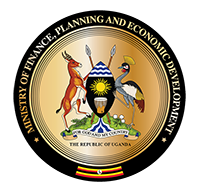Regular Reports
Monthly Performance of the Economy Reports
Our Monthly Performance of the Economy Report (POE) provides a brief commentary on economic developments in the real, external,
financial and fiscal sectors of the economy. These developments are analyzed and contextualized within a 12 month framework (from the current month to the same month 1 year ago). The report for any given month is published in the second half of the following month. Some indicators are published with a lag of one month and are thus discussed for the previous month.
Half-Yearly and Annual Macroeconomic and Fiscal Performance Reports
During each fiscal year (starting in July and ending in June of the following calendar year), MEPD produces two additional reports: A half-yearly macroeconomic and fiscal performance report that reviews and analyzes macroeconomic developments over the first 6 months of the fiscal year (typically published in February). This report is followed by an annual report that reviews and analyzes the macroeconomic and fiscal performance of the entire fiscal year (published after the end of the fiscal year, typically in September).
Debt Sustainability Analysis Report
The Debt Substainability Analysis Report (DSA) is produced at the end of each fiscal year and evaluates the countries medium-term debt sustainability using a very rigorous analytical framework developed at the International Monetary Fund (IMF).
Fiscal Risk Statement
This Fiscal Risk Statement, prepared by the Ministry of Finance, Planning, and Economic Development (MoFPED), identifies key fiscal risks that Government faces in the running fiscal year and the medium term.
Fiscal risks are factors that may cause fiscal outcomes to deviate from expectations or forecasts. For instance, they lead to deviations in expected revenues, expenditures, assets, or liabilities. The conventional approaches of fiscal analysis and estimation of budgets largely do not take these kinds of risks into account. They include but are not limited to climate change, natural disasters, unforeseen expenditure pressures, revenue shortfalls, terms of trade shocks, exchange rate volatility, and materializing of Government guarantees. Therefore, the Government publishes the Fiscal Risk Statement annually as required by the Public Finance Management Act (2015) to monitor and identify mitigation measures of fiscal risks.
Adjusted Macroeconomic Indicators (AMI) Report - Uganda, "Going Beyond GDP"
The Adjusted Macroeconomic Indicators and Measures of Comprehensive Wealth, follow Natural Capital Accounting (NCA) framework which widens the measurement of economic activity, by including some of the broader impacts of that activity and climate change issues, such as: Consumption of natural resources; Pollution; and Environmental degradation. The framework follows and is consistent to the principles of the System of National Accounts (SNA) that underpins the calculation of GDP and other related measures of economic activity. However, it incorporates a broader range of activities (costs and benefits) in the calculation of two key macroeconomic indicators, that is; Adjusted net national income (ANNI); and Adjusted net savings (ANS). It also includes a comprehensive measure of a country’s wealth in different types of assets.
This enables the tracking of levels of national wealth, and whether national income is being generated sustainably from the perspective of preserving national wealth. Information is intended to assist in identifying whether a country’s GDP is being generated in a sustainable manner, and whether the pattern of growth is sustainable. In particular, it addresses whether national income is being generated by the depletion of natural resources, and if so, are other types of capital being increased to compensate for this.
Local Government Finance Statistics (LGFS)
The Macroeconomic Policy Department in Ministry of Finance, Planning and Economic Development
produces Local Government Finance Statistics on an annual basis both in the GFS 1986 and GFS 2001/14 frameworks.
These statistics include District Local Governments, Cities, Municipal Councils and Town councils and are based on
the Public Sector Institutional Unit table.
| LGFS 2021/22 |
 MEPD
MEPD